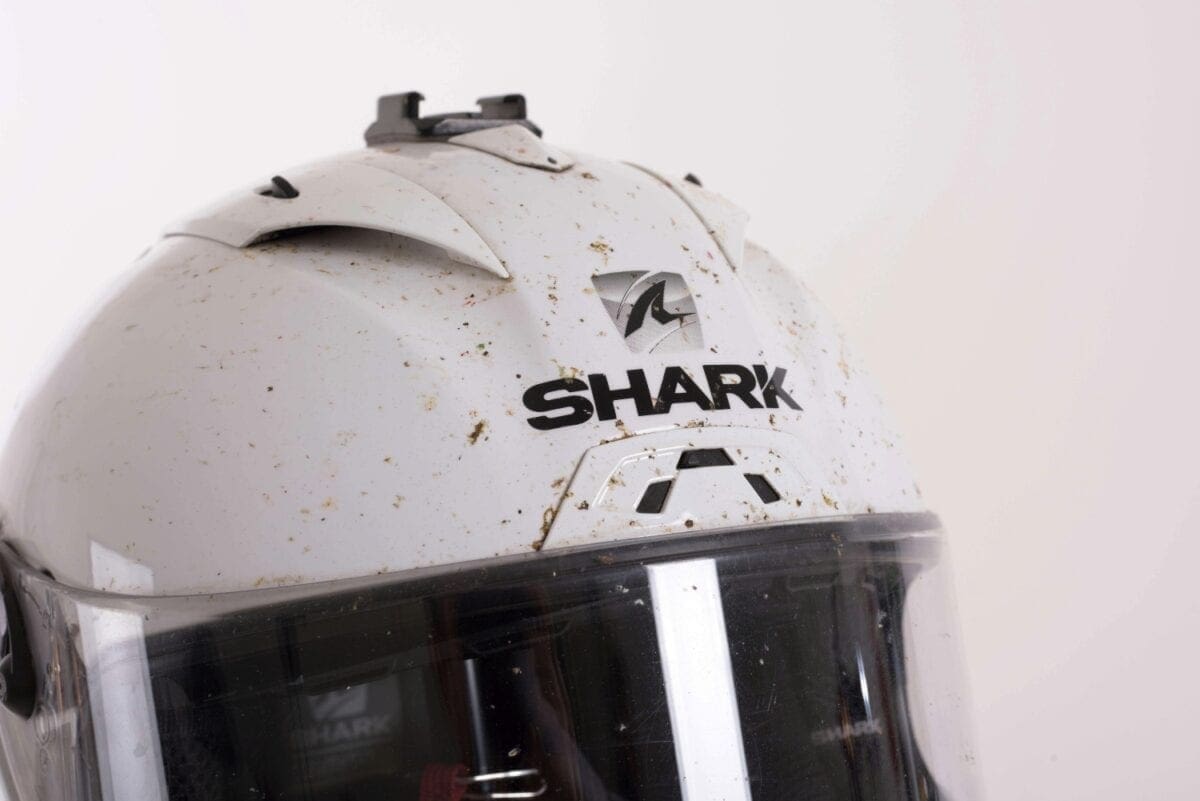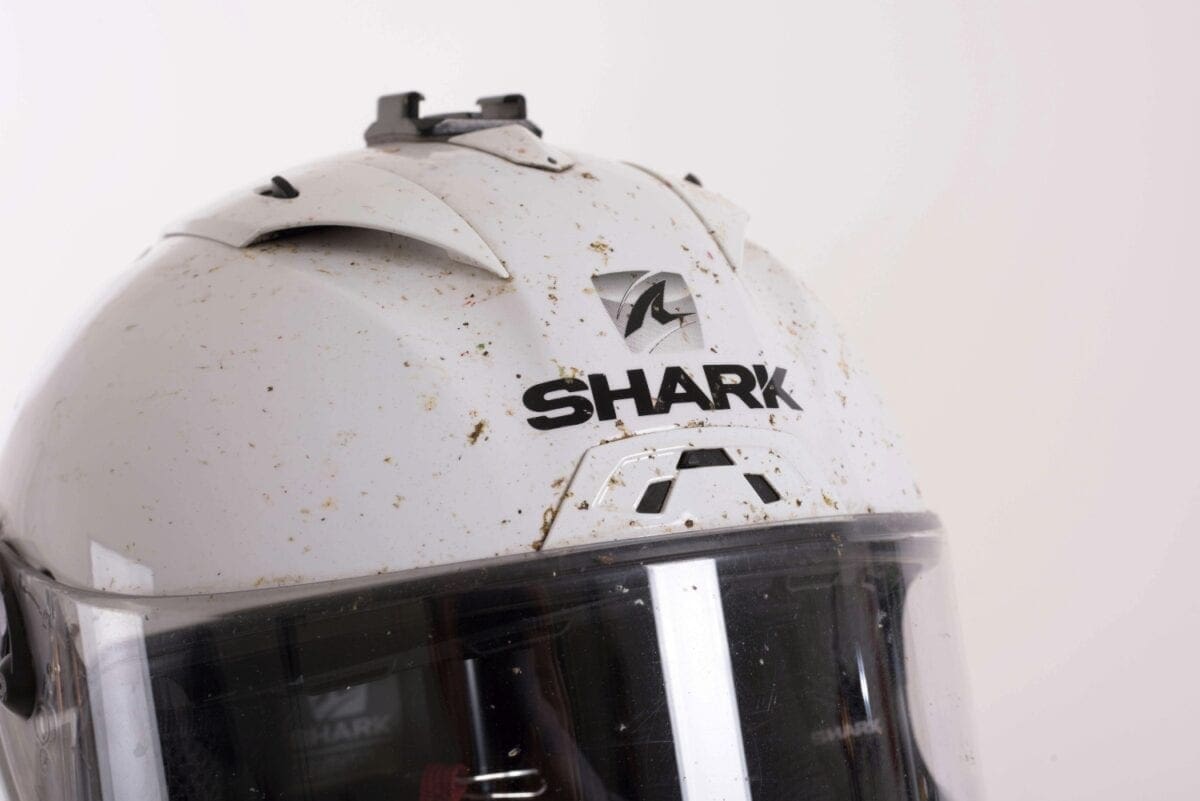We asked Mark from SHARK helmets for his top ten do’s and don’ts for every day helmet care – there are a few things you may be shocked about…
DO
- Keep on top of cleaning – it makes it easier in the long run.
- Leave the visor open when not in use, this allows the interior to vent and the visor seal/rubber to relax to ensure good fit. Apply a spot of silicone occasionally to keep the seal/ rubber soft
- Ensure you get a correct fit – a well-fitting helmet means that it will perform at its best. A badly fitting helmet has the ability to change a good ride out to a bad one when you start getting a headache halfway through and have an attractive red mark on your forehead when you get off, or you’re constantly re-positioning it because it’s too big.
- Carry it properly – which is by the chinstrap or in its bag – and not by the chinbar. You can damage the rubber and the acid and dirt from your hands can affect the rubber and the inside.
- Ask your dealer. Some dealerships can service helmets and carry a range of spare or additional parts – so pick up the phone if you need anything or have any questions.
- Use a professional. You shouldn’t ever paint your own helmet – unless you’re a helmet painter. If you don’t mask up all the vents and rubber correctly then the paint fumes can go into vents and disintegrate the inner polystyrene.
DON’T
- Use a bike cleaner on your helmet – some of the chemicals in them can affect the plastic parts of the helmet such as the visor mechanisms and make them brittle. Always check what the cleaner should be used for – and if you’re unsure, then don’t use it.
- Put your helmet on the fuel tank of your bike – or anywhere near petrol for that matter. Petrol reacts with polystyrene melting and shrinking it; it doesn’t have to make contact either as the fumes can be just as bad.
- Keep your helmet on the wing mirror of your bike – the edge of the mirror can damage the polystyrene on the inside of the helmet through the liner.
- Allow your lid to get too hot. 60c is the maximum temperature polystyrene can reach before it starts being affected. Some people damage helmets by trying to get action camera mounts off – as the technique is to use a hairdryer on low heat/warm – but just be aware of localised temperature. It’s worth bearing in mind too if your helmet is kept near a radiator or spotlights.
- Assume it will be OK. There’s nothing worse than dropping a new lid on the floor. Often riders go into denial and say ‘oh it will be OK’, but what they don’t realise is the damage that’s been done inside. SHARK run an inspection service, while the damage might not be evident on the outside, they can check the inside too. It’s better to be safe than sorry.
Advert
Enjoy everything More Bikes by reading the MoreBikes monthly newspaper. Click here to subscribe, or Read FREE Online.



